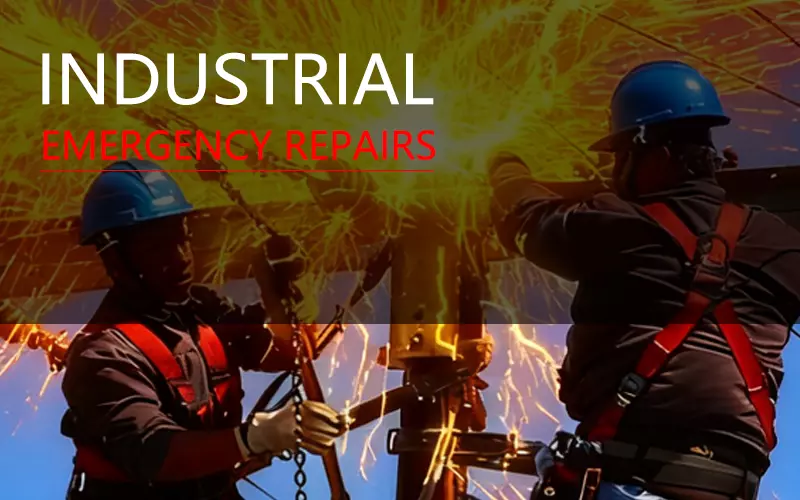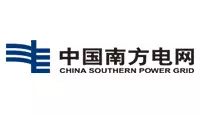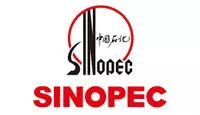Shanghai, China
+86-17317656853
inquiry@cgprotection.com



In industrial facilities, sudden equipment failures or unplanned shutdowns often require immediate emergency repairs. These situations frequently involve energized or near-energized work, creating a high probability of arc flash incidents.
An arc flash can release extreme temperatures (up to tens of thousands of degrees Celsius), intense light, shock waves, and molten metal splatter—all within milliseconds—resulting in severe burns, blindness, hearing damage, or even death. The pressure of time, environmental complexity, and uncertainty during emergency repair work make arc flash hazards particularly critical. Therefore, safety must always take precedence over speed, reinforced through organizational control, procedural discipline, and appropriate personal protective equipment (PPE).
Thermal Radiation – Extreme heat can cause second- or third-degree burns on exposed skin.
Molten Metal Splash – Conductors such as copper or aluminum melt and eject at high velocity, penetrating clothing.
Blast Pressure – Shock waves can damage hearing, internal organs, or cause falls.
Intense Light and UV Radiation – Can cause flash burns to the cornea or retinal injuries.
Toxic Fumes – Heated materials and insulation release harmful gases that damage the respiratory system.
Secondary Hazards – Fire, explosion, equipment collapse, or chemical leaks triggered by the initial arc.
High-voltage switchgear or busbar fault handling – short circuits, arc faults, or racking failures.
Substation or distribution room emergency repairs – live terminal replacement or grounding operations.
Production line restarts after unplanned shutdowns – maintenance on live motors, drives, or control panels.
Power transmission and distribution line repairs – live line work or switching in field conditions.
Electrical testing or live commissioning – live plugging/unplugging or troubleshooting under time pressure.
De-energize first – Shut down whenever possible; live work is the last resort.
Quick Job Safety Analysis (JSA) – Identify voltage, expected short-circuit current, fault clearing time, working distance, arc direction, and combustible materials nearby.
Work method selection – Remote > mechanical > manual (only if essential).
PPE selection – Based on calculated or estimated Incident Energy (cal/cm²).
Isolation and access control – Establish exclusion zones, barriers, and emergency egress routes.
All PPE must comply with IEC, ASTM, NFPA, or GB standards and be third-party certified.
Arc flash protective clothing (≥25 cal/cm² for general repairs; ≥40 cal/cm² for high-voltage bus systems)
Arc-rated hood and face shield (covering the entire head, face, and neck)
Arc-rated gloves (overlapping with sleeves to prevent exposure)
Insulating or antistatic safety boots (protecting against step voltage)
Hearing protection (against blast waves)
Respiratory protection (for toxic smoke or vapor exposure)
Balaclava or neck guard (to prevent neck exposure)
Insulated tools and remote-handling devices
Ensure all closures (collar, sleeves, pant legs) are sealed; no exposed metal parts.
Avoid synthetic underlayers; use cotton or flame-resistant base garments.
Combine modular PPE (face shield, hood, gloves) for flexibility and comfort.
Immediately retire PPE after any arc exposure; document the event.
Initial assessment and isolation (1–3 min)
Check for ongoing fire, gas leaks, or secondary hazards; evacuate and secure the area.
Command and authorization (3–5 min)
Assign a safety supervisor; issue and communicate an emergency work permit.
Decision on power isolation
De-energize if possible; if not, proceed with controlled live repair protocols.
PPE preparation and verification (5 min)
Ensure all PPE is properly donned and communication tools are functioning.
Tool and method setup
Prepare insulated tools, remote manipulators, and observation cameras.
Repair execution
Minimize personnel exposure; maintain constant communication; always work in pairs (operator + monitor).
Post-operation inspection and withdrawal
Verify system stability; clean and inspect PPE; retire any damaged equipment.
Incident review and improvement
Log the event, analyze near misses, and update safety training materials.
Routine drills – Simulated emergency repair and evacuation every six months.
Skill training – Certification for insulated tools, thermal imaging, and remote-control systems.
Mental preparedness – Provide psychological support for high-stress responders.
Qualification system – Certification and re-training required for live work personnel.
Emergency repair kits – Including certified PPE, insulated tools, communication devices, and first-aid supplies.
PPE tracking – Barcode system to log usage, washing, and exposure records.
Inter-agency coordination – Predefined communication with fire, , and emergency authorities.
Third-party testing – Annual certification of PPE, insulated tools, and safety devices.
Myth: “Speed is more important than full PPE.”
Fact: No repair is worth a life. Safety gear is mandatory, not optional.
Myth: “Higher arc rating = absolute safety.”
Fact: Arc direction, cabinet design, and exposure distance matter equally.
Myth: “Arc-exposed PPE can still be reused.”
Fact: Any arc-exposed PPE must be permanently retired.
Myth: “Arc only causes burns.”
Fact: Blast pressure, shrapnel, and toxic fumes are equally deadly.
International Standards: IEEE 1584, NFPA 70E, IEC 61482, ASTM F1959/F2621, EN ISO 11612, EN 1149 series.
Chinese Standards: DL/T 320-2019, GB 8965.1-2020, etc.
Procurement Requirements: Third-party testing certificates for ATPV/EBT, impact resistance, glove insulation, and footwear voltage class.
Quick Risk Assessment Sheet
PPE Inspection Checklist
Step-by-Step SOP Card
PPE Retirement Criteria Card
Communication Templates (commands, evacuation, first aid)
Emergency industrial repairs are inherently unpredictable, with a high likelihood of arc flash incidents. Through rigorous pre-assessment, compliant PPE configurations, standardized procedures, continuous training, and effective post-event management, companies can drastically reduce the risk of injury and secondary accidents without compromising repair efficiency.
Safety is not the opposite of efficiency—it is the foundation of sustainable operation.
Tags:
Shanghai C&G's personal protective clothing and PPE products are trusted by customers in the world. Our products are exported worldwide, with a strong presence in the United States, China, Japan, Germany, the United Kingdom, India, France, Italy, Brazil, and Canada. In addition, we have a significant customer base in other countries across each continent, including Australia, New Zealand, South Africa, Nigeria, and Egypt in Africa; Argentina, Chile, and Mexico in South America; Russia, South Korea, and Indonesia in Asia; Spain, Poland, and Turkey in Europe; and Saudi Arabia and the United Arab Emirates in the Middle East. Wherever you are in the world, we have the products you need to stay safe and protected. Contact us today to learn more about our products and how we can help you meet your safety needs.










© 2023 Shanghai C&G. All Rights Reserved.